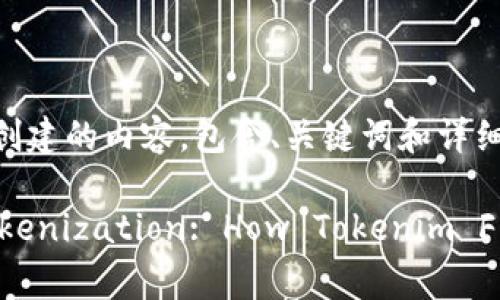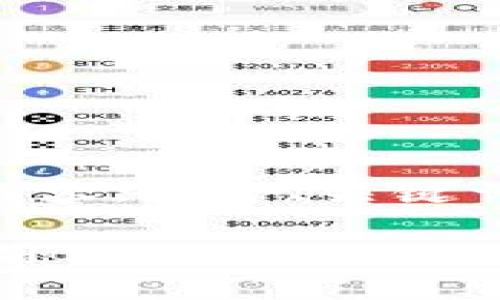Introduction to Tokenim and Tokenization
In an era where digital transformation is reshaping industries, Tokenim emerges as a pioneering solution in the realm of tokenization. Tokenization refers to the process of converting rights to an asset into a digital token on a blockchain. This transformation facilitates not only increased security and efficiency but also unlocks opportunities for fractional ownership and broader market access.
At its core, Tokenim leverages blockchain technology to create a decentralized platform that ensures transparency and security in asset management. By doing so, it enables individuals and businesses to tokenize physical and digital assets, ranging from real estate to intellectual property, enhancing their liquidity and marketability.
This article explores the potential of Tokenim as a catalyst for digital transformation, the various applications of tokenization, its advantages, and the challenges it faces. We will also delve into frequently asked questions to provide a comprehensive understanding of this innovative technology.
The Mechanics of Tokenization

Tokenization involves the conversion of sensitive data into unique identification symbols that retain all the essential information about the data without compromising its security. In the context of assets, it means converting ownership into digital tokens, which can be easily traded or managed on a blockchain.
When an asset is tokenized, it is divided into multiple tokens that represent fractional ownership or rights. This fractional ownership model opens up investment opportunities for a broader audience. For instance, a piece of real estate that is tokenized can provide multiple investors with the opportunity to own a share of the property, rather than requiring a single buyer to purchase the entire asset.
Applications of Tokenization
Tokenim can be applied across various sectors, including real estate, finance, supply chain, and entertainment. In real estate, tokenization simplifies the process of buying and selling properties, allowing for quicker transactions and reduced costs associated with traditional methods.
In finance, assets like stocks and bonds can be tokenized, enabling more liquid markets and potentially democratizing access to investments that were previously limited to wealthy individuals or institutions. Tokenization can also enhance the efficiency of supply chain management by providing real-time tracking and ownership verification.
Moreover, in the entertainment industry, artists can tokenize their work and receive direct payments from fans, cutting out middlemen and enabling a new model of artist-fan interaction. This transformation can lead to more equitable revenue distribution and increased artist support.
Advantages of Tokenization

The advantages of adopting tokenization are multifaceted. Firstly, it enhances liquidity by allowing fractional ownership, which can attract a wider range of investors. This democratization of investment opportunities can lead to increased participation in markets that were once inaccessible to the average person.
Secondly, tokenization improves transparency. Since transactions are recorded on a blockchain, all parties involved can verify ownership and transaction history in real-time. This level of transparency can help reduce fraud and build trust among users.
Thirdly, tokenization can significantly reduce transaction costs and increase the speed of transactions. By eliminating the need for intermediaries, both buyers and sellers can benefit from lower fees and quicker exchanges.
Challenges Facing Tokenization
Despite its many advantages, tokenization also faces challenges. Regulatory uncertainty is one of the most significant hurdles, as laws around digital assets and tokenization vary widely across different jurisdictions. Ensuring compliance while innovating can be a delicate balance for companies like Tokenim.
Additionally, there are concerns regarding security. While blockchain technology is generally considered secure, there are risks associated with hacking and fraud that cannot be entirely eliminated. Companies must invest in robust security measures to protect their assets and clients.
Another challenge is the need for widespread adoption of tokenization. For it to be effective, both businesses and consumers must understand and trust the technology. This requires continuous education and outreach efforts to demystify tokenization and its benefits.
Frequently Asked Questions
1. What types of assets can be tokenized?
Tokenization can encompass a variety of assets. Commonly tokenized assets include real estate, art, stocks, bonds, and intellectual property. Recent developments also suggest that personal identity, loyalty points, and even carbon credits can be represented as tokens. The flexibility of tokenization means that almost any asset with value can potentially be converted into a digital token, thereby facilitating trading and ownership transfer.
For real estate, tokenization allows multiple investors to own fractions of a property, creating a more accessible market for those who might not have enough capital to invest in whole properties. In the art world, artists can tokenize their pieces, allowing fans to own a part of the artwork and receive benefits like royalties or exclusive content. Furthermore, intellectual property such as patents can also be tokenized, allowing for easier licensing and royalties collection.
2. How does tokenization impact liquidity?
Liquidity refers to how easily an asset can be bought or sold in the market without affecting its price. Tokenization enhances liquidity by creating a marketplace where fractions of assets can be traded much like stocks. This fractional ownership allows investors to enter markets with lower capital requirements, thereby broadening the investor base and increasing the overall liquidity of the asset.
For example, if a real estate property worth $1 million is tokenized into 1,000 tokens worth $1,000 each, various investors can buy in without needing to purchase the whole property. In traditional markets, it may take much longer to find a buyer or seller for such large assets. Tokenization simplifies these processes, connecting buyers and sellers directly on blockchain platforms, streamlining transactions and reducing the time required to buy or sell assets considerably.
3. What role does blockchain play in tokenization?
Blockchain technology is the backbone of tokenization. It provides a decentralized database that is secure and tamper-proof, ensuring that all transactions related to the tokenized assets are transparent and verifiable. Every transaction is recorded on the blockchain, creating a permanent and auditable ledger that is accessible to all parties involved.
The nature of blockchain technology means that once an asset is tokenized, ownership can be tracked in real time without the need for traditional intermediaries such as banks or brokers. This reduces the possibility of fraud, shortens the transaction process, and lowers costs associated with transferring ownership. Blockchain also ensures that the integrity of the data regarding the asset's ownership is maintained, as changing or tampering with blockchain records is virtually impossible.
4. What does the future hold for tokenization and digital assets?
The future of tokenization looks promising, driven by advancements in technology, an increasing shift towards digitalization, and growing interest among investors. As more industries recognize the advantages of tokenization, we are likely to see an expansion in the types of assets being tokenized, along with greater acceptance from regulatory bodies.
In the coming years, we can expect enhanced interoperability between different blockchains, which will facilitate the trading of tokenized assets across various platforms. Moreover, as digital identity solutions evolve, the ability to safely and securely authenticate individuals and assets will further bolster the adoption of tokenization.
Investors will likely find themselves with unprecedented access to a variety of investments across global markets, thanks to fractional ownership models, increasing market access, and the support of regulatory frameworks. With these advancements, tokenization may not only reshape the economic landscape but also redefine how we perceive ownership and value in a digital world.
In conclusion, Tokenim represents a significant leap towards a future where asset management and investment become highly efficient, secure, and accessible. As we move forward, embracing tokenization could very well be the key to unlocking the full potential of digital transformation across various sectors.